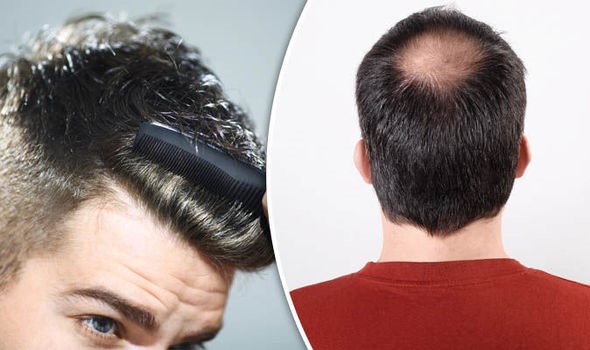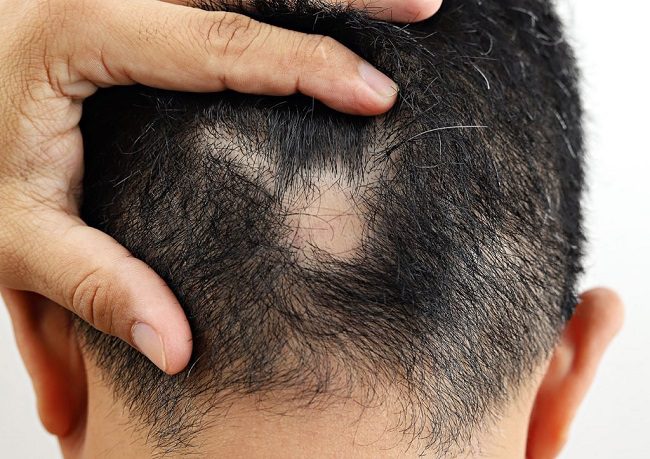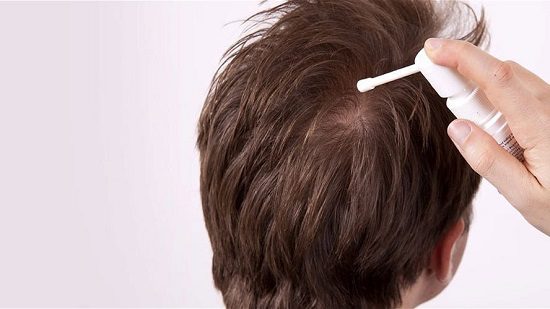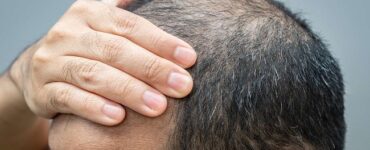Most of us don’t want to lose our hair. Hair is the life, and when it comes to hair loss, whether it’s due to alopecia or male pattern baldness, we start searching for treatments. Losing less hair every day is normal. It is a part of human life, but losing 100+ strands per day isn’t normal. Today we take a closer look at alopecia vs male pattern baldness. You will learn the differences, causes, and more.
Table of Contents
Alopecia vs Male Pattern Baldness: An Overview

Alopecia vs male pattern baldness: In androgen alopecia, or male pattern baldness, hair follicles shrink over time. This type of hair loss happens in a specific pattern over the scalp. Also, there will be a significant gap between the hair shedding and hair growth. Although the pattern and gap will vary as per individual body type, as a result, the hair grows short and fine.
Clinical studies on alopecia (hair loss) show that it can be long-term or temporary. Alopecia is most often caused by an infection, a nutritional imbalance, a genetic or congenital condition, an autoimmune condition, or the environment.
Another common type of alopecia is telogen effluvium. It is widely known for the thinning of the hair rather than the bald patches. It can be caused by many things, like a change in hormones during pregnancy, a lot of emotional or physical stress, a change in diet, a short-term or long-term illness, an infection or cancer, a reaction to a drug, etc.
In telogen effluvium, other body hair is usually not affected, but your hair feels thinner. It is unlikely that patients will lose all their hair, and their hair will regrow back within 6 months. Additionally, alopecia areata, on the other hand, leads to patches of baldness, usually on the scalp but can be anywhere on the body. In most cases, the hair will grow back again within a few months.
Frankly speaking, losing hair is a highly traumatic experience. In the case of men, baldness is often associated with age and masculinity. Losing your hair can make you feel older and less attractive. Moreover, it can make you feel like you are losing your youth and beauty. Although there are various hair treatments available, knowing how and why baldness appears is necessary. Also, the type of treatment depends on the specific hair problem.
The Difference Between Male Pattern Baldness Vs Alopecia

Alopecia vs male pattern baldness: To find out the difference between male pattern baldness and alopecia, we will examine the differences between alopecia and balding. In short, the term “alopecia” is a general term referring to the decline or loss of visible hair. There are many types of hair loss, and the symptoms vary accordingly.
On the contrary, male pattern baldness is a very common type of hair loss, also known as androgenic alopecia. It is mainly seen in males and females. That’s why it is known as male or female pattern baldness. In males, the hair starts receding from the vertex and temples. However, in females, it affects the crown and temple hair area. Well, it is not completely baldness.
Male pattern baldness is frequently hereditary or associated with a high level of testosterone. Most people have 50-100 hairs per day, but when the hair falls more than the normal levels, it refers to pathological hair loss.
Is alopecia and male pattern baldness the same?
Alopecia: The term “alopecia” is somewhat confusing. It is sometimes used as an umbrella term for any kind of hair loss or a specific autoimmune disorder. In alopecia cases, the major culprit is auto-immune disease. The autoimmune form of alopecia (hair loss) refers to a disorder that results in baldness but not in a specific pattern or order. Your hair typically falls in clumps out of the scalp without much specific reason.
Essentially, the immune system affects the hair follicles, causing the hair to shed without new hair growth. This type of hair loss is temporary. However, if it is not treated on time, its flare-ups will occur periodically. Experts say that there is no cure for alopecia, but you can manage hair loss by restoring the scalp and doing some healthy practices.
Male Pattern Baldness
As the name suggests, male pattern baldness occurs in men. Androgenic alopecia is mainly caused by genetics and hormones. It seems like a receding hairline, and then it progresses to hair thinning on the top of the head.
As we know, male pattern baldness is caused by genetics and hormones, so if your father or grandparents were bald, then you will also become bald. It takes years to get a result. Almost 50% of males are affected by MPB by the age of 50.
Alopecia and male pattern baldness are not similar. Male Pattern Baldness is not caused by any medical condition or due to any disease. It is genetical or hereditary. MPB creates a pattern called M-Pattern or Bald. Male Pattern Baldness can’t be cured since it is a genetic issue.
Not to worry, because there are a variety of treatments available that can help, such as hair replacement and follicular unit extraction. Knowing the actual cause of your hair loss can help you get effective treatment. Alopecia and pattern baldness are different.
Scarring vs Non-Scarring Alopecia
Hair loss is a common concern for all. Well, in scarring alopecia vs. non-scarring, things are not the same. Scarring hair loss is also called cicatricial alopecia. It is caused by a rare disorder that destroys the hair follicles. It was replaced by the scar tissue. In general, this disorder results in permanent hair loss. In some cases, this hair loss can be accomplished with burning, itching, pain, and inflammation.
Additionally, the scar tissue forms a change in the appearance of the skin and shows signs of redness, swelling, scaling, and pigmentation.
Non-scarring alopecia, on the other hand, is simply hair loss without the scarring on the scalp. Clinically, it is known as noncicatricial alopecia. This type of hair loss is fairly common. It can be caused by various factors, including underlying health issues, autoimmune disorders, etc. There are various types of scarring hair. However, both scarring and non-scarring alopecia can be treated.
Are alopecia and male pattern baldness treatable?
Alopecia vs male pattern baldness: Now that you understand the differences between Male Pattern Baldness and Alopecia, In this article, we have learnt that there is no cure for hair loss or pattern baldness, but it can be treated medically. A few medical treatments, like Oral Finasteride and Topical Minoxidil, are used for hair regrowth.
Depending on the type of hair loss, several hair treatments are available. The treatments include steroid injections, steroid creams, and ointments.
If the problem is associated with the autoimmune system, anti-inflammatory medications like injections, creams, pills, or immunotherapy are the available options to treat the condition and get your gorgeous hair back. Moreover, the surgical option includes a hair transplant.
In most cases, most of the hair treatments manage hair loss rather than provide a permanent solution. There are various other natural supplements as well to stimulate hair loss in men and women. A hair transplant is the permanent solution for fixing hair loss, but it is costly and risky.
Does Minoxidil Work?

Topical Minoxidil is a hair regrowth medicine to treat pattern baldness in men and alopecia. In general, minoxidil is used for the treatment of hair loss or male pattern baldness in men, but now it is used for women too. A number of studies are linked with minoxidil to show the effectiveness of this solution.
Types of Minoxidil Concentration
There are two types of minoxidil concentration. Once daily, Minoxidil 5% concentration is used. However, 2% minoxidil is directed for use twice a day.
Finasteride is another popular oral drug for hair loss and androgenic alopecia. It contracts the androgenic hormone testosterone by preventing the testosterone from becoming dihydrotestosterone (DHT). It is mainly used to treat prostate enlargement. But it is also prescribed for male pattern baldness. Hair loss can’t always be stopped, but thanks to the highly advanced treatments and clinical studies that slow down the process.
Final Words
In general, hair loss usually comes as we age. It is a symptom of the natural aging process. Moreover, it can also cause stress, hormones, genetics, or underlying medical conditions. In Alopecia vs male pattern baldness, we have noticed that hair loss can be prevented. On the other hand, male pattern baldness is treated, but there is no cure.
There is no cure for both of the conditions, but some treatments are helpful to slow down the process. You can also find some dietary supplements for hair loss. Dietary supplements are free from side-effects and full of benefits. Before using any supplement or hair-growth solution, identify which one shows promising results.
If you have noticed hair thinning or you have a family history of baldness, then you will not be able to recover fully. Still, you may be able to prevent the hair loss condition. Also, you can talk to your registered practitioner to get the most effective solution.







Add comment